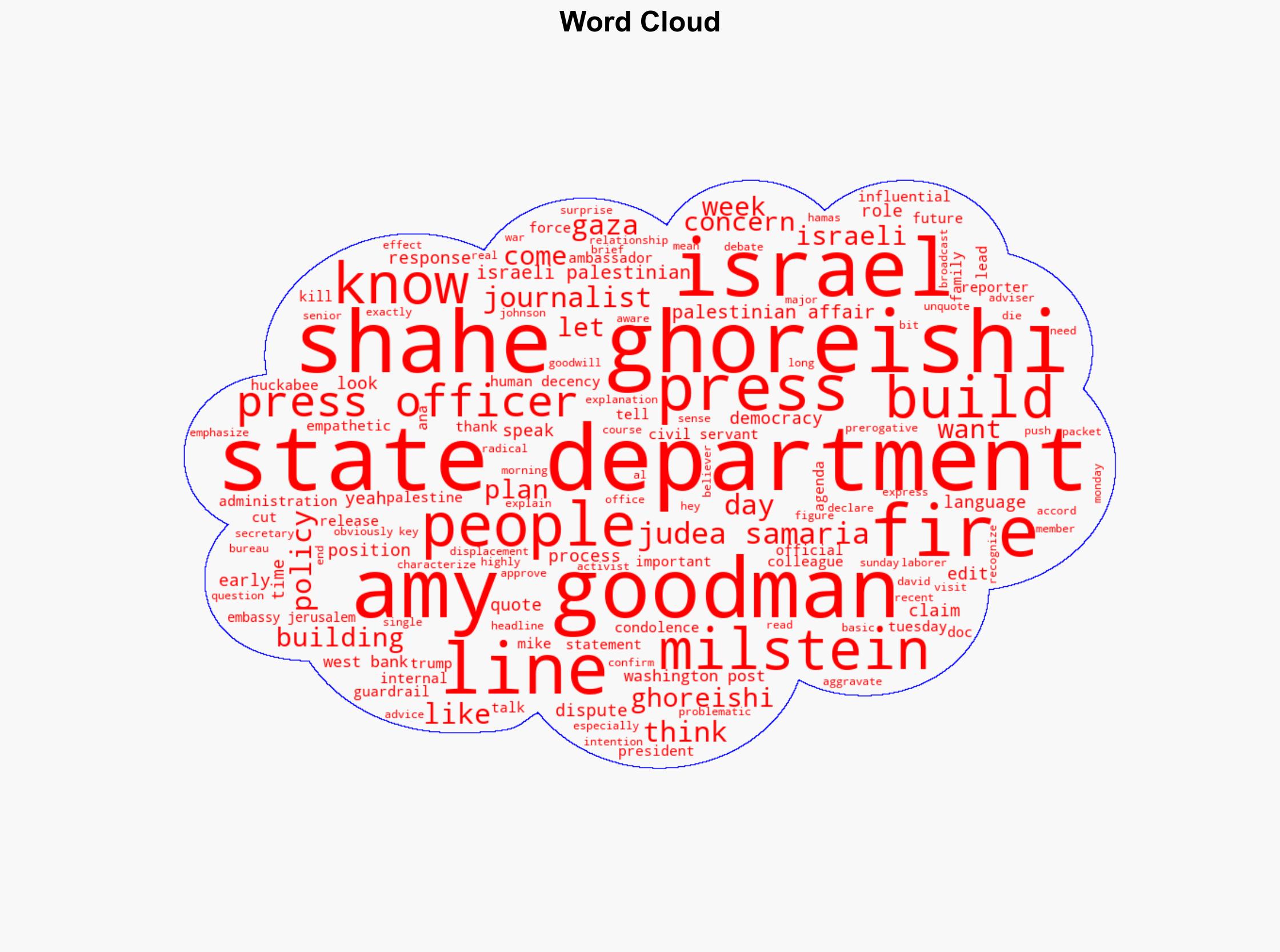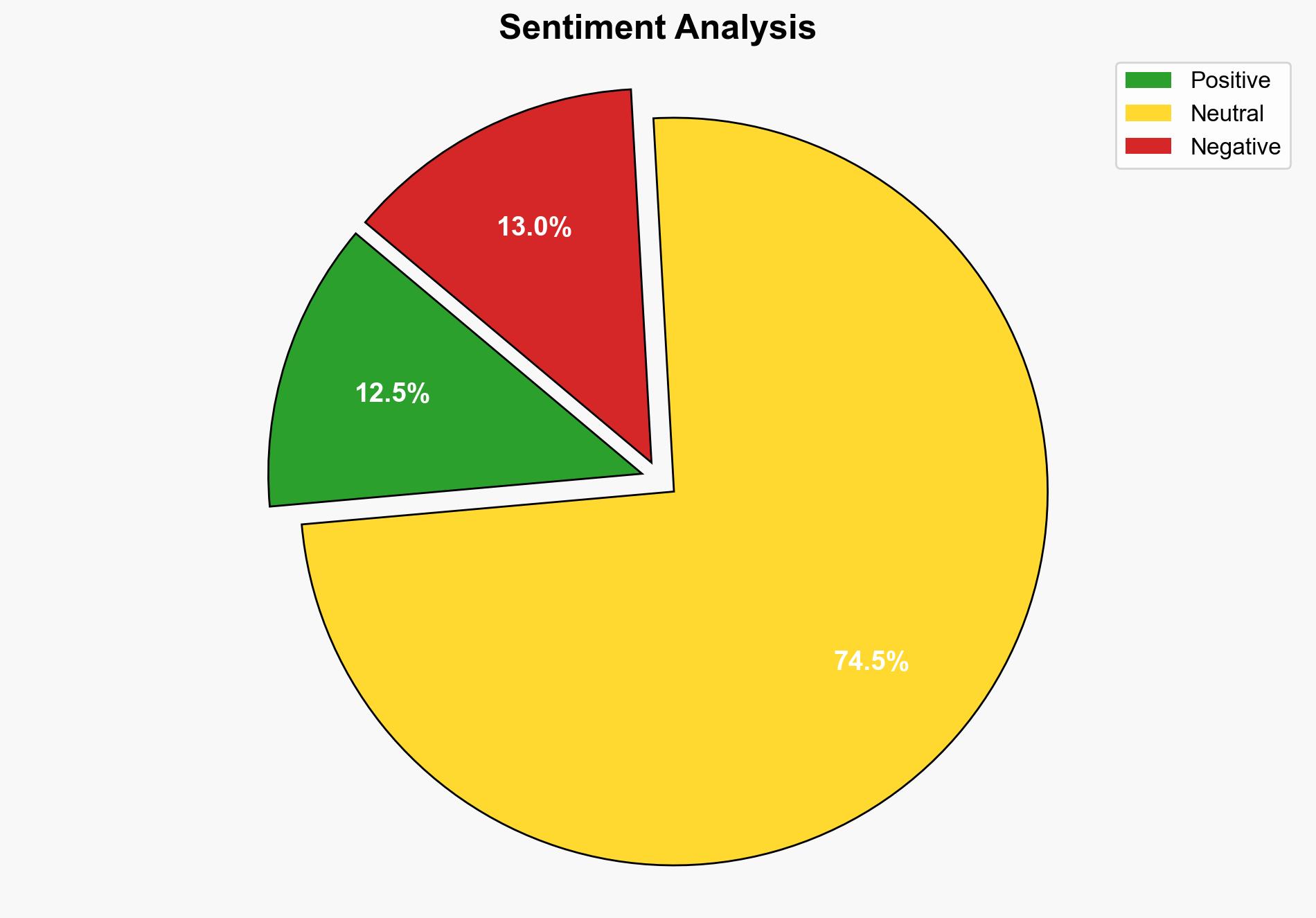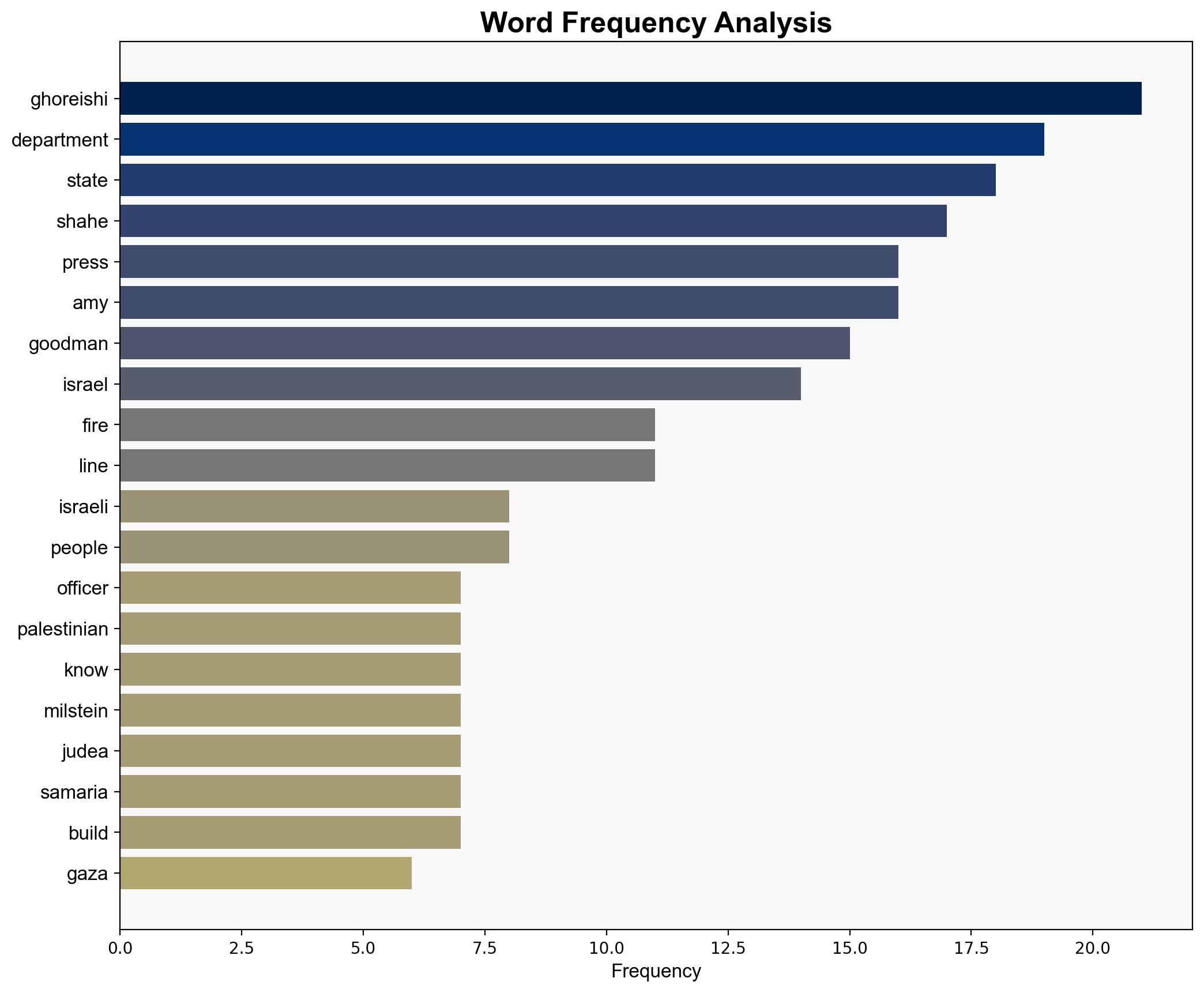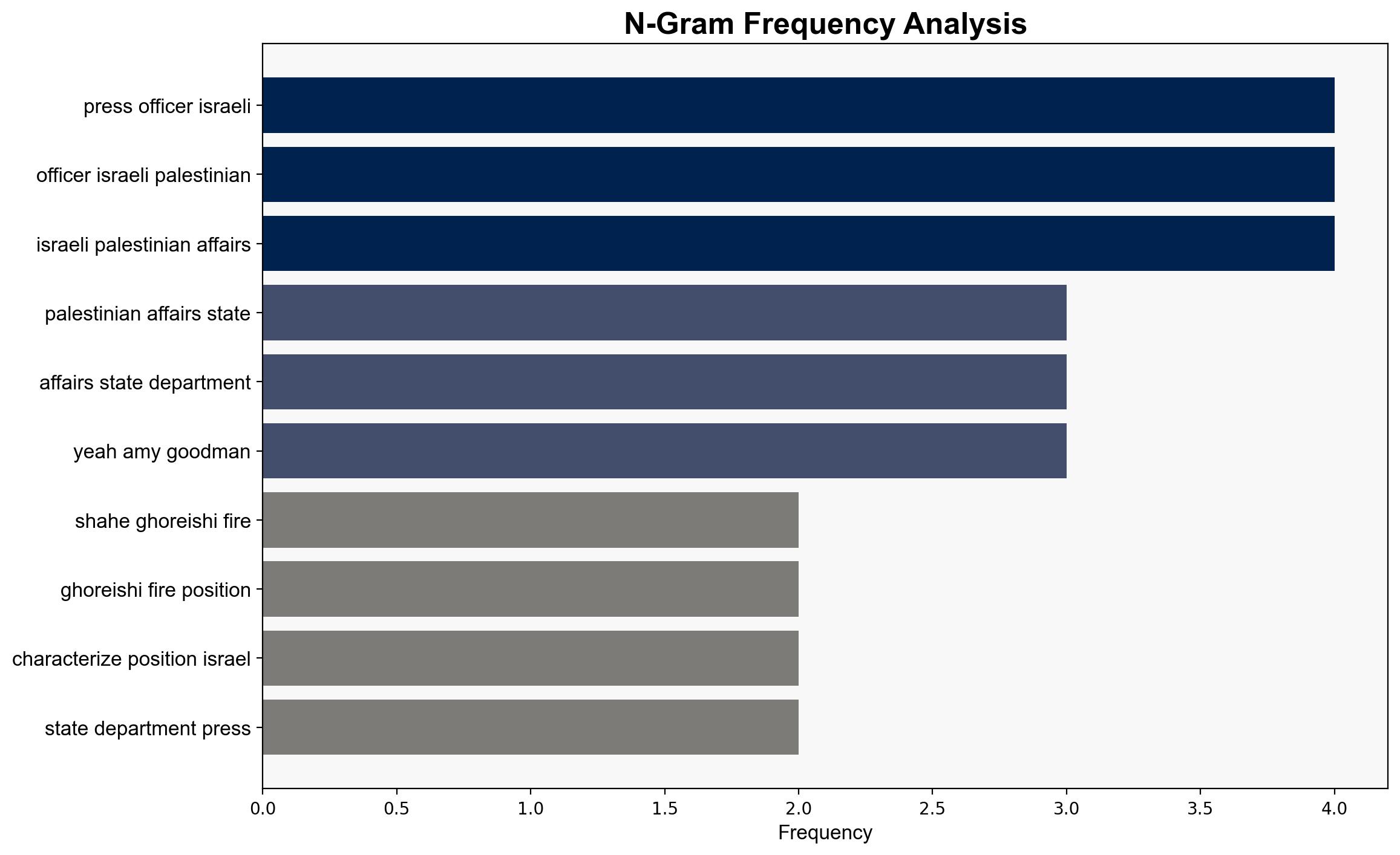EXCLUSIVE Fired State Dept Official Speaks Out Suggested Condolences for Killed Gaza Journalists – Democracy Now!
Published on: 2025-08-22
Intelligence Report: EXCLUSIVE Fired State Dept Official Speaks Out Suggested Condolences for Killed Gaza Journalists – Democracy Now!
1. BLUF (Bottom Line Up Front)
The firing of Shahe Ghoreishi from the State Department appears to be a result of internal policy disagreements regarding the U.S. stance on Israeli-Palestinian affairs, specifically concerning the language used in official statements. The most supported hypothesis is that Ghoreishi’s firing was politically motivated due to his proposed language that conflicted with the administration’s stance. Confidence level: Moderate. Recommended action: Re-evaluate internal communication protocols and ensure alignment with broader diplomatic strategies to prevent similar incidents.
2. Competing Hypotheses
1. **Hypothesis A**: Ghoreishi was fired due to internal policy disagreements and his proposed language in press releases that conflicted with the administration’s stance on Israeli actions in Gaza.
2. **Hypothesis B**: Ghoreishi’s dismissal was primarily due to broader departmental disputes unrelated to specific policy positions, possibly involving personal or professional conflicts.
Using ACH 2.0, Hypothesis A is better supported by the evidence, including Ghoreishi’s own statements and the specific language he proposed, which was rejected by senior officials. Hypothesis B lacks direct evidence linking the firing to broader disputes beyond the specific incidents mentioned.
3. Key Assumptions and Red Flags
– **Assumptions**: It is assumed that the language in press releases is a critical factor in diplomatic relations and that deviations from approved language can lead to significant internal conflict.
– **Red Flags**: The reliance on statements from involved parties without corroborating evidence from independent sources. Potential bias in Ghoreishi’s account due to personal involvement.
– **Blind Spots**: Lack of information on the internal dynamics and decision-making processes within the State Department.
4. Implications and Strategic Risks
– **Geopolitical**: The incident highlights potential fractures within U.S. foreign policy apparatus, which could undermine diplomatic efforts in the Middle East.
– **Psychological**: The firing may impact morale within the State Department, leading to self-censorship or reluctance to propose alternative viewpoints.
– **Escalation Scenarios**: Continued internal discord could lead to inconsistent foreign policy messaging, affecting international relations and U.S. credibility.
5. Recommendations and Outlook
- Conduct an internal review of communication protocols to ensure alignment with strategic objectives.
- Enhance training for staff on diplomatic language and its implications.
- Scenario Projections:
- Best: Improved internal cohesion and clear, consistent foreign policy messaging.
- Worst: Further internal conflict leading to public disputes and weakened diplomatic standing.
- Most Likely: Gradual resolution of internal disagreements with minor adjustments in communication strategies.
6. Key Individuals and Entities
– Shahe Ghoreishi
– David Milstein
– Mike Huckabee
– Steve Witkoff
– Anas al Sharif
7. Thematic Tags
national security threats, diplomatic communications, Middle East policy, internal conflict





